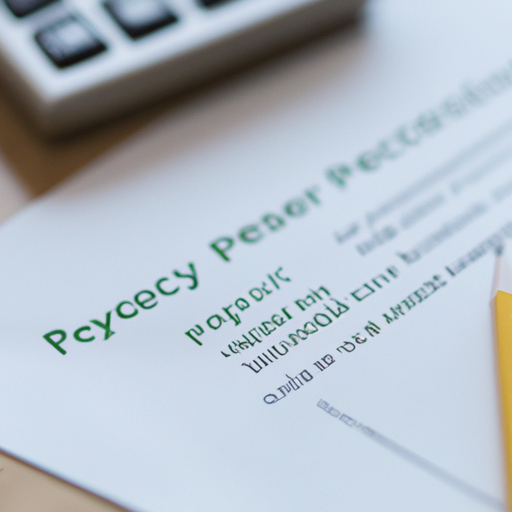Understanding your electricity bill might seem like a daunting task filled with complicated numbers and industry jargon. In reality, once you get familiar with the main elements and layout, it becomes a breeze to decode. In “Master Guide: Top Ways to Decipher Your Electricity Bill Like a Pro”, you’ll demystify those puzzling aspects of your utility statement, convert it into plain language and simple concepts, making it easier for you to manage and control your energy usage. This guide won’t just improve your knowledge but also empower you to make informed decisions and possibly save money.
Understanding Your Electricity Bill
Let’s be honest, your electricity bill can be a little confusing with its various charges and terms. But do not fret. We’re here to simplify it for you. We’ll dissect your electricity bill, help you understand common phrases, and even provide tips on how to reduce it.
Basic Components of an Electricity Bill
Your electricity bill consists of several charges, including generation, transmission, and distribution costs, along with taxes and other charges. Generation is the production of electricity, transmission is the movement of electricity from the generation plant to your local area, and distribution gets the electricity from your local area to your home.
Decoding the Terms: kWh, Demand, and Rates
“KWh” stands for kilowatt-hour, which is a measure of how much electricity you’re using. “Demand” refers to the highest rate at which you consume power in a billing period, while “Rates” are the amount you pay per kWh.
Why Do Electricity Bills Vary Month-to-Month?
Your energy bills may fluctuate from month to month based on a couple of factors. For starters, it may be due to variations in energy consumption – using more air conditioning during summer months can increase your usage. Seasonal changes in your utility’s rates can also affect your bill.
The Role of Utility Companies
Of course, utility companies play a critical role in your electricity bill. Let’s delve into this role and debunk any myths you might hold about these important entities.
Distribution vs. Supply: Understanding the Difference
When it comes to electricity, “supply” means the generation of power. On the other hand, “distribution” is the delivery of that power to your home. Understanding the difference can help you better comprehend the charges on your bill.
The Impact of Electricity Deregulation on Your Bill
Electricity deregulation, where you can choose your electricity supplier, can impact your bill too. It might lead to more competitive rates, but it can also usher in a complex array of plans and providers, which may affect the final charges.
Breaking Down Utility Company Charges
Utility company charges can seem daunting, but they usually cover costs related to generation, transmission, and distribution of electricity to your home. These charges will also cover the operating costs of the utility company.

Reading the Bill’s Line Items
You can understand your bill better if you know what each line item represents. This understanding can also aid in identifying potential errors.
Generation Costs
This is the cost associated with producing electricity. These charges can vary depending on how and where the electricity is generated.
Transmission Costs
These charges cover the cost of moving electricity from the generation plant to your local distributor. It might include maintenance of transmission lines and infrastructure.
Distribution Costs
Distribution fees pay for getting electricity from your local area to your home. It involves the cost of maintaining and improving the local power grid.
Miscellaneous Charges
This section includes other minor charges such as customer service fees, taxes, etc. Don’t ignore these as they can add up over time.
Your Home Energy Consumption
Understanding your home’s energy consumption can help you manage your usage and therefore your bill.
Understanding Energy Usage and Efficiency
Efficiency is all about getting the most out of your energy usage. Efficient appliances consume less electricity for the same output, while inefficient ones waste energy.
Your Appliances and their Energy Impact
Different appliances consume electricity differently. Larger appliances or outdated models tend to consume more electricity. Be mindful of this to manage your usage and save on your bill.
Calculating Personal Energy Consumption
You can calculate your energy consumption by checking the wattage of each device and how long you use it daily. This process will give you an idea of your consumption pattern and where you can cut back.

Deciphering Electricity Rates
Understanding how electricity rates work can empower you to make savvy decisions that could decrease your bill.
Fixed vs. Variable Rates: What You Need to Know
Fixed rates remain constant for a contract term, which makes it easy for budget planning. Variable rates fluctuate based on market conditions, making them unpredictable but potentially cheaper.
Time of Use (TOU) Rates
TOU rates refer to varying electricity charges during different times of the day, with peak hours costing more. Understanding this can help you shift your consumption to off-peak hours to save money.
Tiered Rates
With tiered rates, as you consume more electricity, your charge per kWh goes up. This structure encourages energy conservation.
Tips to Lower Your Electricity Bill
A lower electricity bill is possible by simply making a few adjustments here and there.
Key Energy-Saving Measures
Switching off lights when not in use, unplugging unused electronics, and using energy-saving bulbs are simple yet effective ways to reduce your bill.
Energy-Efficient Appliances: Are they Worth It?
Energy-efficient appliances might cost more upfront but can save you money in the long run by reducing your electricity consumption. They are indeed worth the investment.
Taking Advantage of Off-Peak Hours
Using electricity-intensive appliances during off-peak hours can significantly reduce your bill. Make this a habit where possible.

Exploring Green Energy Options
Going green is not only good for the planet, but it can also help reduce your bill.
Demystifying Green Energy
Green energy is derived from renewable sources like wind, solar, and hydro. Unlike fossil fuels, they do not harm the environment.
Evaluating Cost and Benefits of Green Energy
Although green energy may require an initial investment, like solar panels, they can pay off in the long run through reduced electricity bills and potential tax credits.
Green Energy and Your Electricity Bill
Green energy can potentially lower your bill as you generate some or all of your electricity. Plus, some utilities even buy back surplus power!
Navigating Potential Errors on Your Bill
Errors in your bill can lead to overcharges and thus, it’s important to review it carefully every month.
Common Errors to Look Out for
Common billing errors can include incorrect meter readings, double-billing of charges, or billing based on estimates instead of actual usage.
What to Do When You Spot an Error
If you spot a mistake, contact your utility provider promptly with all relevant details. Always keep a record of your conversations.
Disputing Charges: A Step-by-Step Guide
If there’s a dispute, submit a formal complaint to your utility provider. If unresolved, you can escalate to your local utility commission.
The Impact of Local and State Laws on Your Bill
Be it tax breaks, incentives, or regulations, local and state laws can greatly impact your bill.
Tax Breaks and Incentives for Energy Efficiency
Many states offer tax breaks or incentives to promote energy efficiency. Check what’s available in your local area.
Understanding Local and State Regulations
Various regulations govern utility rates and practices. Being aware of these can help you understand your bill better.
Energy Policy: How it Can Affect Your Electricity Bill
Energy policies can dramatically affect the cost of electricity. For instance, subsidies for renewable energy can lead to more affordable green energy options.
Demystifying the Future of Electricity
The future of electricity may look different, thanks to promising technologies and trends.
Understanding Smart Meters
Smart Meters digitally send meter readings to your energy provider for more precise bills.
The Trend towards Renewable Energy
The move towards renewable energy is gaining momentum. It’s more sustainable, and over time, can be cheaper.
How Future Technology Might Affect Your Electricity Bill
Technologies like energy storage, AI and home automation could revolutionize electricity usage and potential savings.
In conclusion, understanding your electricity bill can help you make informed decisions to manage your energy usage and potentially save money. So go ahead, give it a try!
